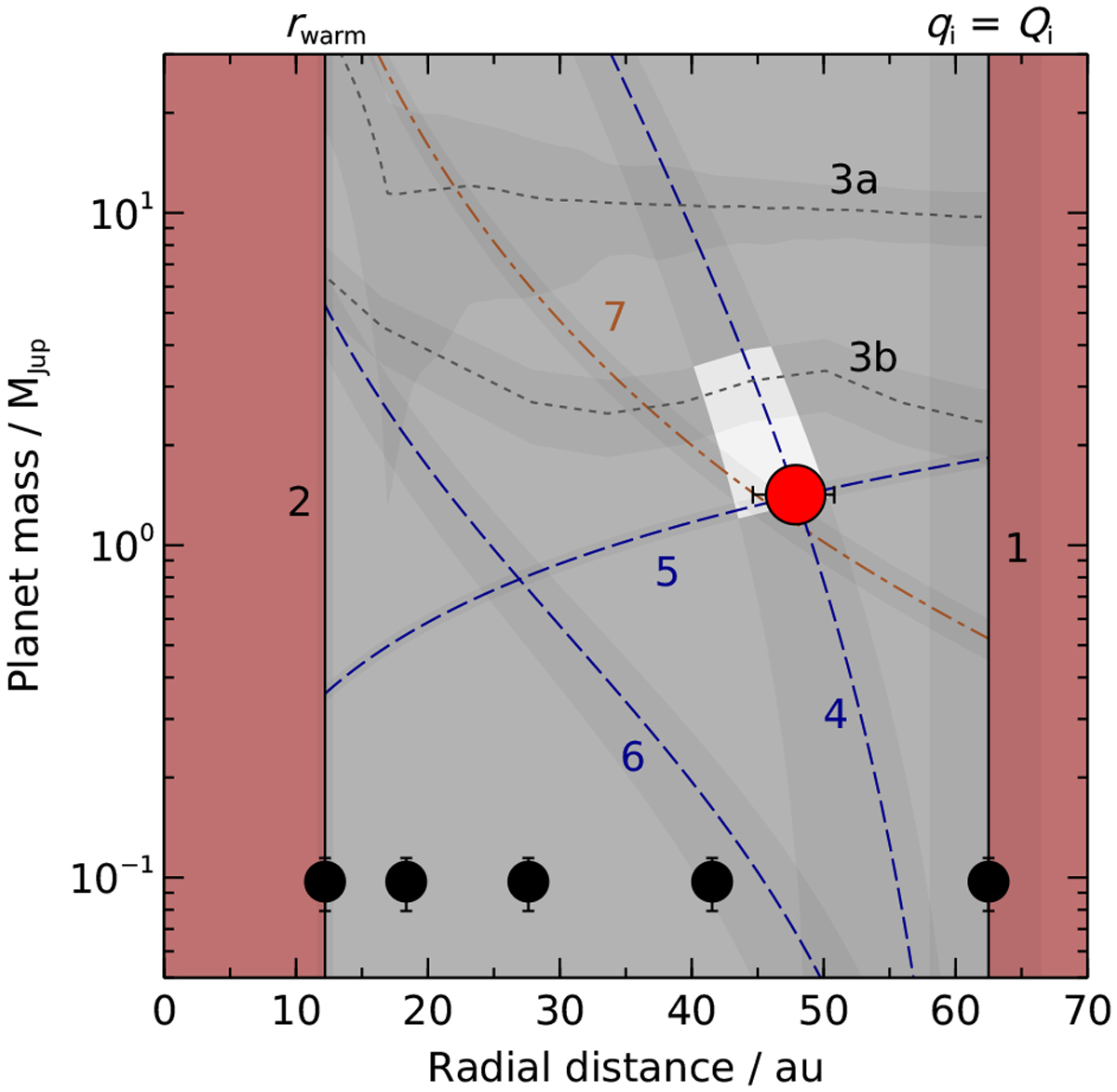Fig. 7

Download original image
Masses and locations of the smallest planets needed to sculpt or stir the outer debris disc of 49 Cet (HD 9672), according to different models. The system hosts two debris discs; the outer disc has its resolved inner edge at 62 ± 4 au (line 1), and the unresolved inner disc is located around 12.2 ± 0.6 au (line 2). Lines 3a and 3b show 5σ detection limits; 3a is our NaCo-ISPY limit, and 3b is the SPHERE H2-band limit from Choquet et al. (2017) (with uncertainties derived as in Sect. 2.1.3). The red circle is the minimum-mass planet predicted by the Pearce & Wyatt (2014) model, which assumes that the outer disc is sculpted by a single planet (Sect. 3.1). Lines 4, 5, and 6 show the constraints from the Hill radius (Eq. (6)), diffusion time (Eq. (7)), and secular time (Eq. (8)), respectively, used to predict the properties of this single planet; if the outer disc is sculpted by one planet, then that planet is predicted to lie in the white region. The black circles denote the minimum-mass planets predicted by the alternative Shannon et al. (2016) model, which assumes that the outer disc is sculpted by multiple, equal-mass planets spanning the gap between the inner and outer discs (Eqs. (12) and (15) in Sect. 3.2). Line 7 is the minimum planet mass required to stir the outer disc (Eq. (23) in Sect. 4.2); we note that this is a separate analysis from the sculpting analysis because we do not necessarily assume that the disc is stirred by the sculpting planet(s). The 1σ uncertainties are shown as error bars around points and dark grey regions around lines. Similar analyses to those shown here are applied to all systems in our sample. We note that grain dynamics could be complicated by the presence of gas in this system (much less so than in a protoplanetary disc but still potentially enough to couple to dust; Moór et al. 2019). The PYTHON program used to produce this plot is publicly available for download8.
Current usage metrics show cumulative count of Article Views (full-text article views including HTML views, PDF and ePub downloads, according to the available data) and Abstracts Views on Vision4Press platform.
Data correspond to usage on the plateform after 2015. The current usage metrics is available 48-96 hours after online publication and is updated daily on week days.
Initial download of the metrics may take a while.


